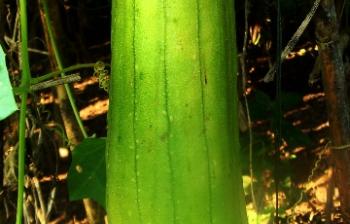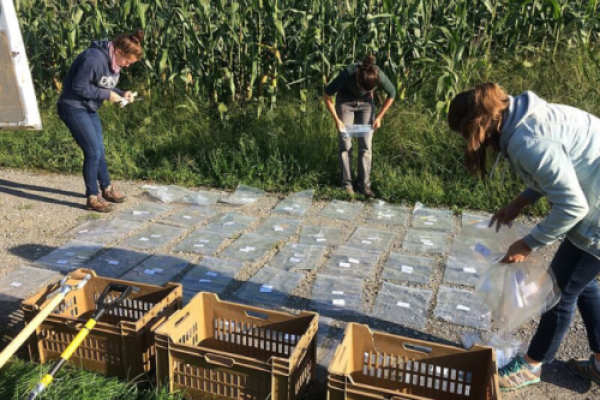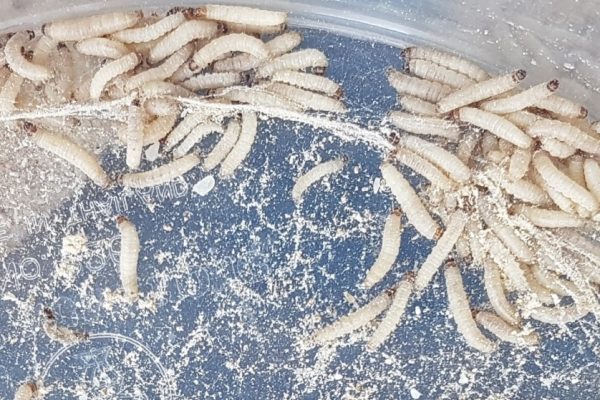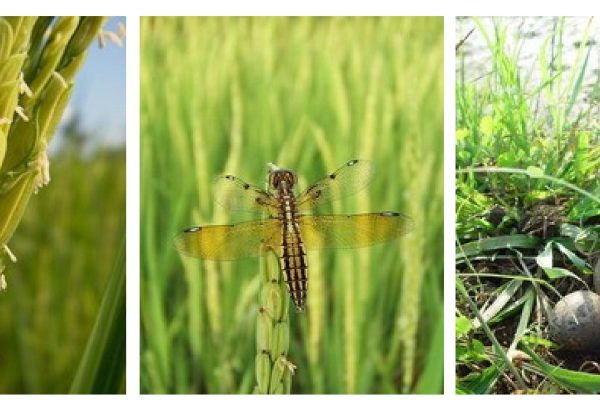
Variety Characteristics (also known as sponge gourd) Species-Luffa aegyptiaca
Fruit is long, light green with stripes. Plant is very productive and strong, can handle many days of heavy rain. Young fruits are cooked and eaten, while fully mature and dry fruit yield seed and the luffa which can be used as a sponge or shower scrub.
Soil and Climate
Likes (full) sun and well drain sandy loam soil. Best grown in the rainy season, planting in May/ June.
Planting Suggestions
Soak seeds 2-3 hrs to induce sprouting before planting. Plant 2-3 seeds in prepared holes. Once 2 leaves are showing, thin out to leave only the 2 healthiest seedlings in each hole. Once 20-25 days old, prepare a trellis to allow the plants to climb. Allow 150 x 150 cms between rows.
Care
Fertilize 2 times, 1st at 15-20 days and again at 60- 70 days before flowering. Use compost or aged manure. (observe the crop to see if enough fertility if not may fertilize again) When watering, should water evenly in the right amount, not leaving them dry or over watering (observe the planting soil). Thinning. Once 2 leaves are showing, thin out to leave only the 2 healthiest seedlings in each hole. A trellis needs to be build to allow the plant to climb and for easy harvesting one the plants are 20- 25 days old. May need to help the plants to start climbing initially. Fertilize with compost or manure that has been aged (composted) 3 months.
Pests and Diseases
No disease problems found. However some pests eat leaves, flowers, and fruits. For minor pest problems may removed by hand, for more serious, use wood vinegar solution to spray the fruits.
Harvesting
Starts 70 -75 days after seeding
Seed Saving
Once about 120 days, the fruits will become brown in color. Dry and lightweight fruits may be harvested and then dried another 3-4 days (sun dried). When fully dry, remove the seeds from the fruit and clean them. Sun dry the seeds another 2-3 days. Then bring them into the shade to cool off. They may then be packed in paper bags. Bags should be marked with the name of the variety, day, month, and year of harvest. Fold this paper bag and put into a plastic bag. Keep in the refrigerator for better longterm germination and minimal seed respiration. If so stored, can keep for over 2 years.
The seeds may also be kept directly in the dried gourd itself, hung in a dry shady place. However the germination rate will decrease more rapidly due to the external changing conditions. They may be only keep for a year with such a method.



